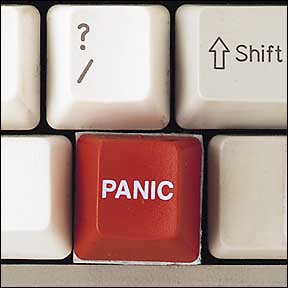Lately, I’ve been sharing tips on self-publishing with quite a few authors, online and in person. Most of it is “how-to” stuff. But some of it concerns the attitude that an indie author must maintain if he is to be successful.
And of all the “attitudinal” advice that I could give to authors who have embarked on the path to self-publishing, here’s one tip that I can’t emphasize strongly enough:
Be patient!
Indie publishing works opposite from everything that authors have come to expect from traditional publishers.
In legacy publishing, all success occurs as a result of “the big splash” of publicity on the book’s release date. That’s because the book has only 6-8 weeks shelf life in a bookstore to find its audience, after which it typically is pulled from the shelves, remaindered, or sent back to the publishers to be pulped. And within a year, it goes “out of print” and is gone, usually forever.
That tight time span has generated a frantic, desperate mindset in writers: They believe that success must come immediately, or their book has failed forever. So, when they turn to self-publishing, it is hard for them to stop thinking in those terms. They can’t quite grasp that indie sales do not depend on “the big splash”; they rely instead on “the long tail.”
This means: After its initial release, sales are usually minimal; they build slowly, over a long period of time—months or even several years—growing largely by word-of-mouth recommendations from one reader to others.
Put another way: Traditional publishing is a sprint; indie publishing is a marathon.
As an indie author, you have to think like a marathoner: slow, steady, and PATIENT. Your goal is to build a loyal fan base of repeat customers over time. Each new book you publish will add new people to that fan base—and it also will boost the sales of your previous books, too, as those new fans go back and buy your earlier titles. Some now-hugely-successful indie authors are finding that books they published years ago, and which never sold much, are suddenly popping up onto bestseller lists.
In my case, sales of my debut thriller, HUNTER, started off well on June 21, 2011—but within days, they fell, and they tanked over the July 4th weekend. Then they began to creep up. After a few weeks, they plateaued at a steady level that lasted months, bouncing up and down a bit, but within a decent range. In late November, though, Amazon named HUNTER an “editors’ pick,” and sales skyrocketed overnight. When their promo ended, sales began to trail off on a slow downward arc. Even so, they remained stellar throughout January 2012, very good during February…but then returned to their pre-promotional levels during March through May.
This June, sales of HUNTER, though still respectable, have declined to a level lower than any since its first month of publication. But am I worried? No, because I know that they will continue to bounce around, depending on quirks of publicity. And I also know that they’ll probably shoot right back up again after I release my next book, since I now have many loyal fans who are eager to read the sequel.
So, you really, really must be patient. Don’t worry about slow launches, and don’t fixate on daily or weekly sales statistics. Sales numbers bounce around all over the place, and they rarely indicate any “trend.” Besides, “sales trends” don’t really mean much anymore, because as self-publishing guru Joe Konrath points out, “ebooks are forever.” (The same applies to “print-on-demand” books.) They are never “yanked off the shelves” or “go out of print.” They have years to find their audience.
It’s a slow, erratic process. But that’s how it works. If you proceed with that as your expectation, you won’t make yourself a nervous wreck by staring constantly at the sales charts and thinking that you have to DO SOMETHING RIGHT NOW to boost sales.
No, you don’t.
Just relax. You’re in a marathon. It doesn’t matter to a marathoner what “position” (ranking) he’s in during the opening stages of the race, when he’s lost in the crowd of runners. It’s a matter of maintaining a steady pace, of doing smart things along the way, and of positioning himself for surges much later. That is how you have to think about this.
There’s another reason to take your time: You don’t want to rush something into publication, only to spend weeks trying to undo mistakes and messes that easily could have been avoided. I’ve met a number of authors who have jumped into this hastily, without researching the options, with ill-prepared manuscripts, indifferent editing, poor covers, lousy promo copy on their Amazon page, no advance reviews, no marketing plan, no blog or website in place, no Facebook or Twitter presence…and, not surprisingly, they’ve seen no sales. It’s a shame, because some of their books are decent. They deserved better.
And so do you.
So try to enjoy the marathon. It’s an adventure of self-expression, and you get to meet some wonderful people along the way: talented fellow authors and avid, loyal readers.
Good luck to you, my fellow scribe. And above all: Keep writing!



 Photo (c) by Debbie Scott
Photo (c) by Debbie Scott




